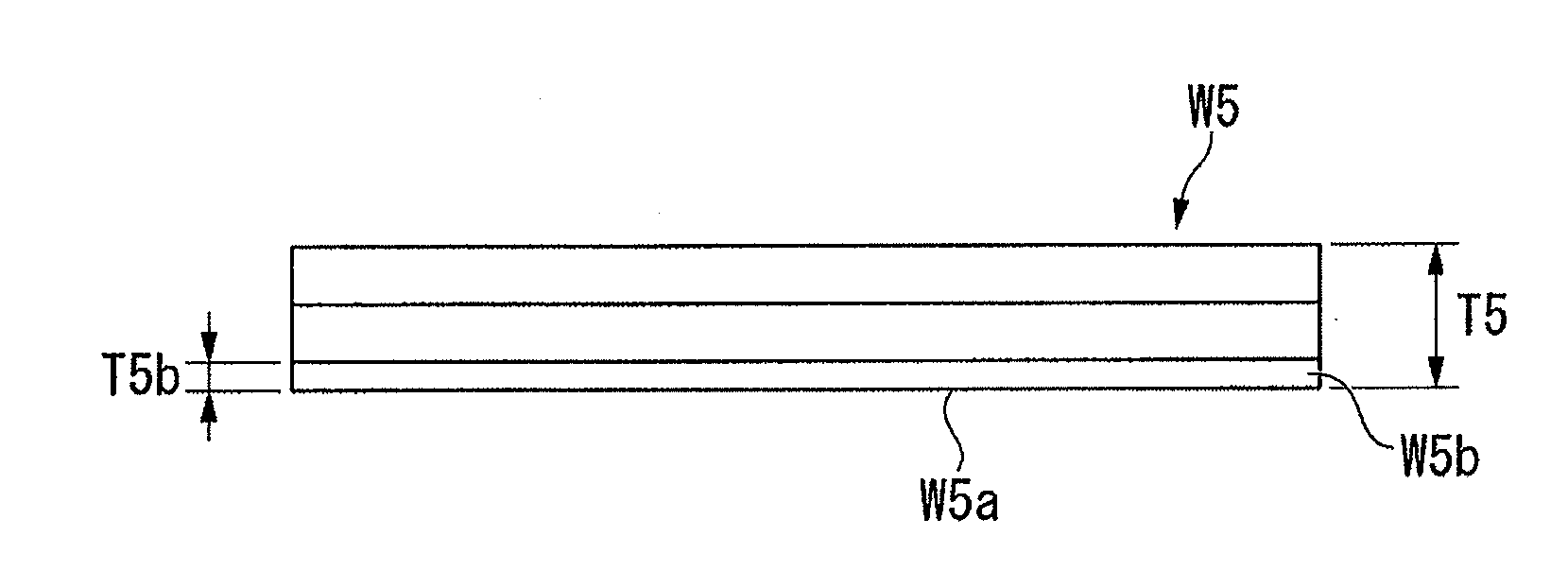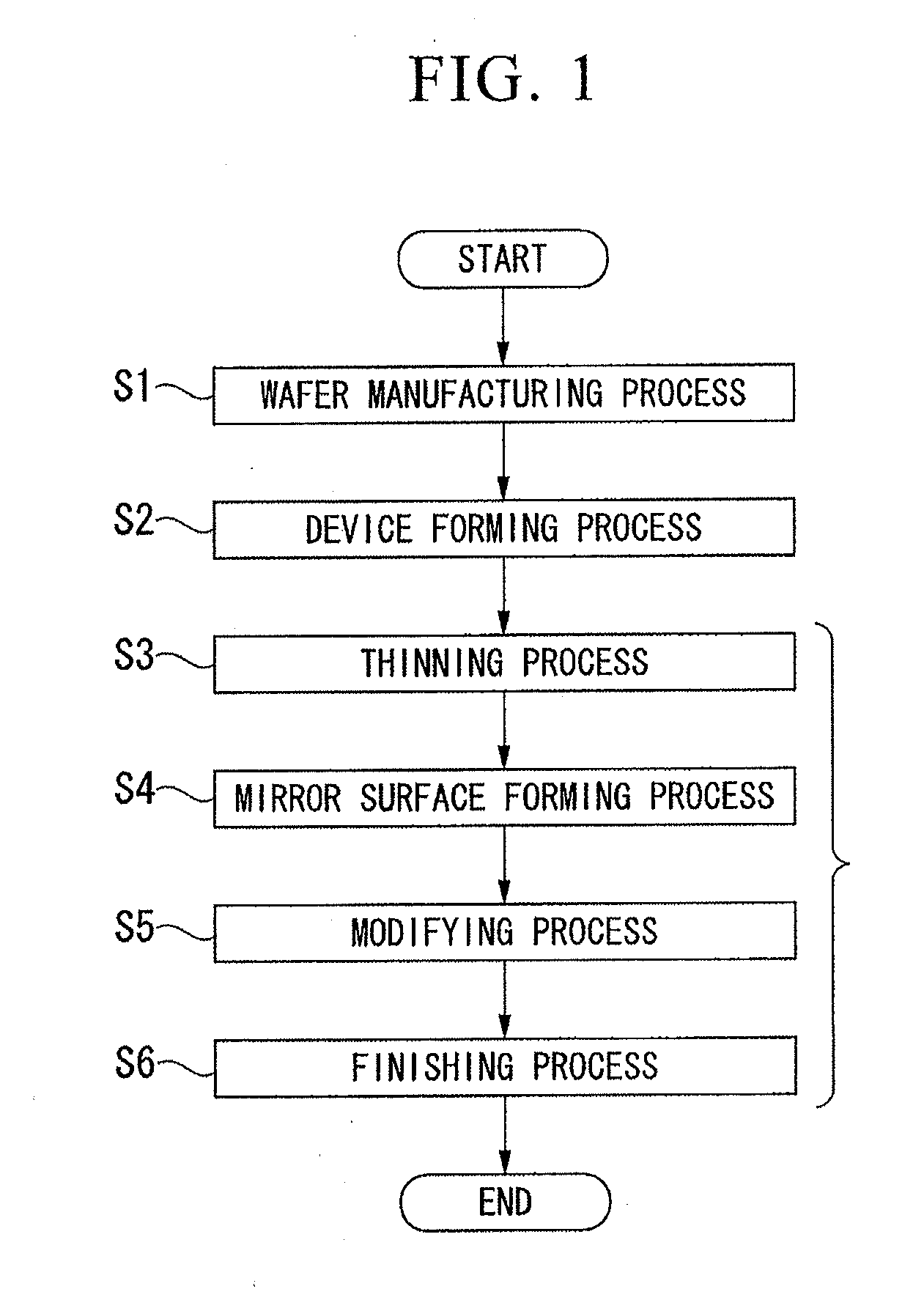Thin silicon wafer and method of manufacturing the same
a technology of thin silicon and manufacturing methods, applied in the direction of basic electric elements, electrical apparatus, semiconductor devices, etc., can solve the problems of significantly deteriorating electrical characteristics of devices, significant deterioration of device characteristics, and mixing of impurities such as heavy metals, so as to improve maintain the flexural strength, and reduce the flexural strength of the wafer
- Summary
- Abstract
- Description
- Claims
- Application Information
AI Technical Summary
Benefits of technology
Problems solved by technology
Method used
Image
Examples
Embodiment Construction
[0030]According to an embodiment of the present invention, there is provided a silicon wafer manufactured from a silicon single crystal that is grown by a CZ method to have a carbon concentration in the range of 1.0×1016 atoms / cm3 to 1.0×1017 atoms / cm3 and an initial oxygen concentration in the range of 1.4×1018 atoms / cm3 to 1.6×1018 atoms / cm3. A device is formed on the surface of the silicon wafer, and the silicon wafer has a thickness that is greater than or equal to 5 μm and equal to or less than 40 μm.
[0031]In this embodiment, the oxygen concentration is measured by ASTM F121-1979.
[0032]A modifying process of the present invention may be a polishing process of polishing the surface of the silicon wafer and a CMP process using hard slurry that is made of colloidal silica, silicon crystal, or diamond-like carbon and has a hardness in the range of 200 HV to 1000 HV.
[0033]The device formed on the silicon wafer according to the present invention may be a memory device.
[0034]Hereinaft...
PUM
 Login to View More
Login to View More Abstract
Description
Claims
Application Information
 Login to View More
Login to View More - R&D
- Intellectual Property
- Life Sciences
- Materials
- Tech Scout
- Unparalleled Data Quality
- Higher Quality Content
- 60% Fewer Hallucinations
Browse by: Latest US Patents, China's latest patents, Technical Efficacy Thesaurus, Application Domain, Technology Topic, Popular Technical Reports.
© 2025 PatSnap. All rights reserved.Legal|Privacy policy|Modern Slavery Act Transparency Statement|Sitemap|About US| Contact US: help@patsnap.com



